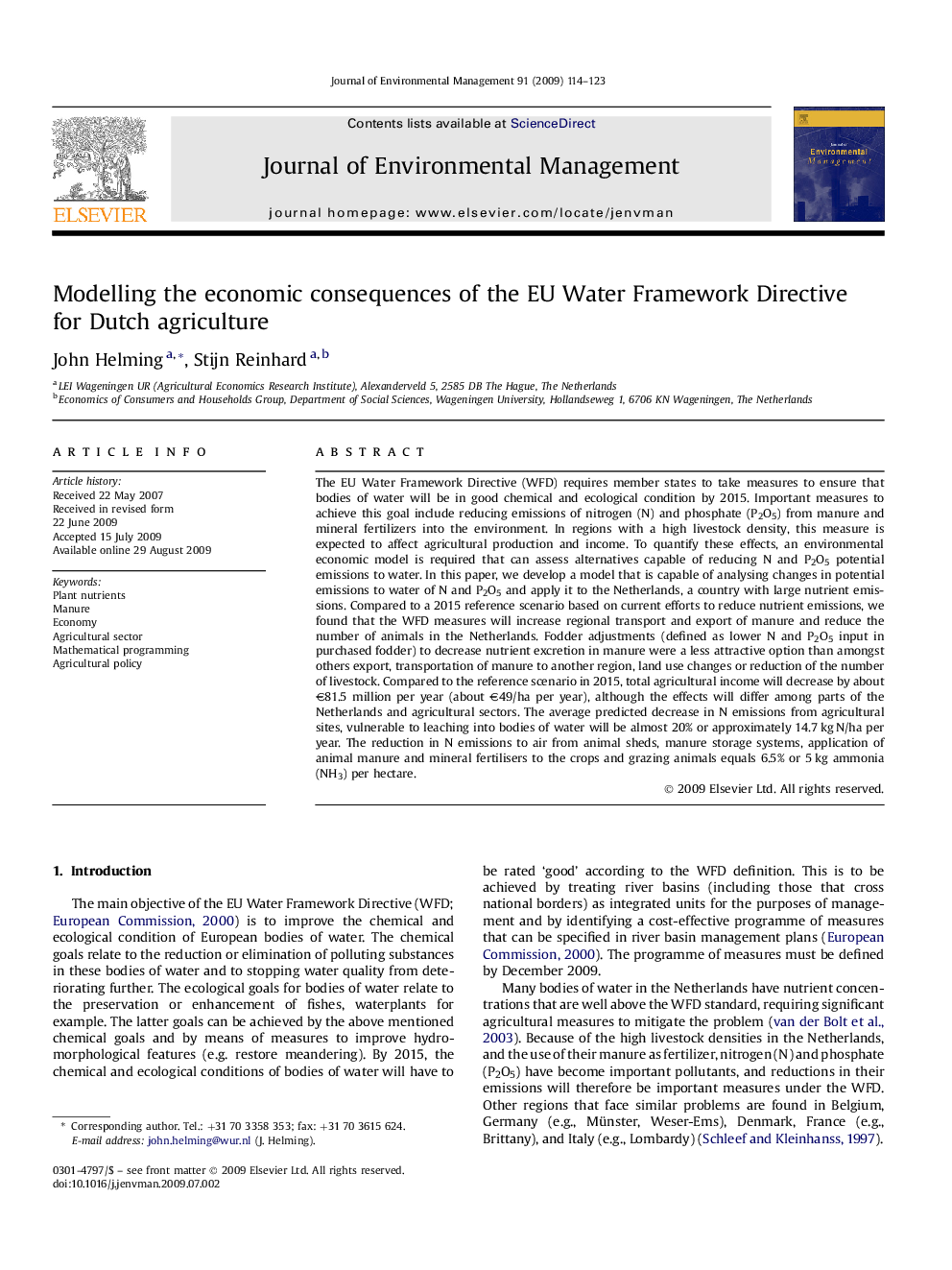| کد مقاله | کد نشریه | سال انتشار | مقاله انگلیسی | نسخه تمام متن |
|---|---|---|---|---|
| 1057247 | 947067 | 2009 | 10 صفحه PDF | دانلود رایگان |

The EU Water Framework Directive (WFD) requires member states to take measures to ensure that bodies of water will be in good chemical and ecological condition by 2015. Important measures to achieve this goal include reducing emissions of nitrogen (N) and phosphate (P2O5) from manure and mineral fertilizers into the environment. In regions with a high livestock density, this measure is expected to affect agricultural production and income. To quantify these effects, an environmental economic model is required that can assess alternatives capable of reducing N and P2O5 potential emissions to water. In this paper, we develop a model that is capable of analysing changes in potential emissions to water of N and P2O5 and apply it to the Netherlands, a country with large nutrient emissions. Compared to a 2015 reference scenario based on current efforts to reduce nutrient emissions, we found that the WFD measures will increase regional transport and export of manure and reduce the number of animals in the Netherlands. Fodder adjustments (defined as lower N and P2O5 input in purchased fodder) to decrease nutrient excretion in manure were a less attractive option than amongst others export, transportation of manure to another region, land use changes or reduction of the number of livestock. Compared to the reference scenario in 2015, total agricultural income will decrease by about €81.5 million per year (about €49/ha per year), although the effects will differ among parts of the Netherlands and agricultural sectors. The average predicted decrease in N emissions from agricultural sites, vulnerable to leaching into bodies of water will be almost 20% or approximately 14.7 kg N/ha per year. The reduction in N emissions to air from animal sheds, manure storage systems, application of animal manure and mineral fertilisers to the crops and grazing animals equals 6.5% or 5 kg ammonia (NH3) per hectare.
Journal: Journal of Environmental Management - Volume 91, Issue 1, October 2009, Pages 114–123